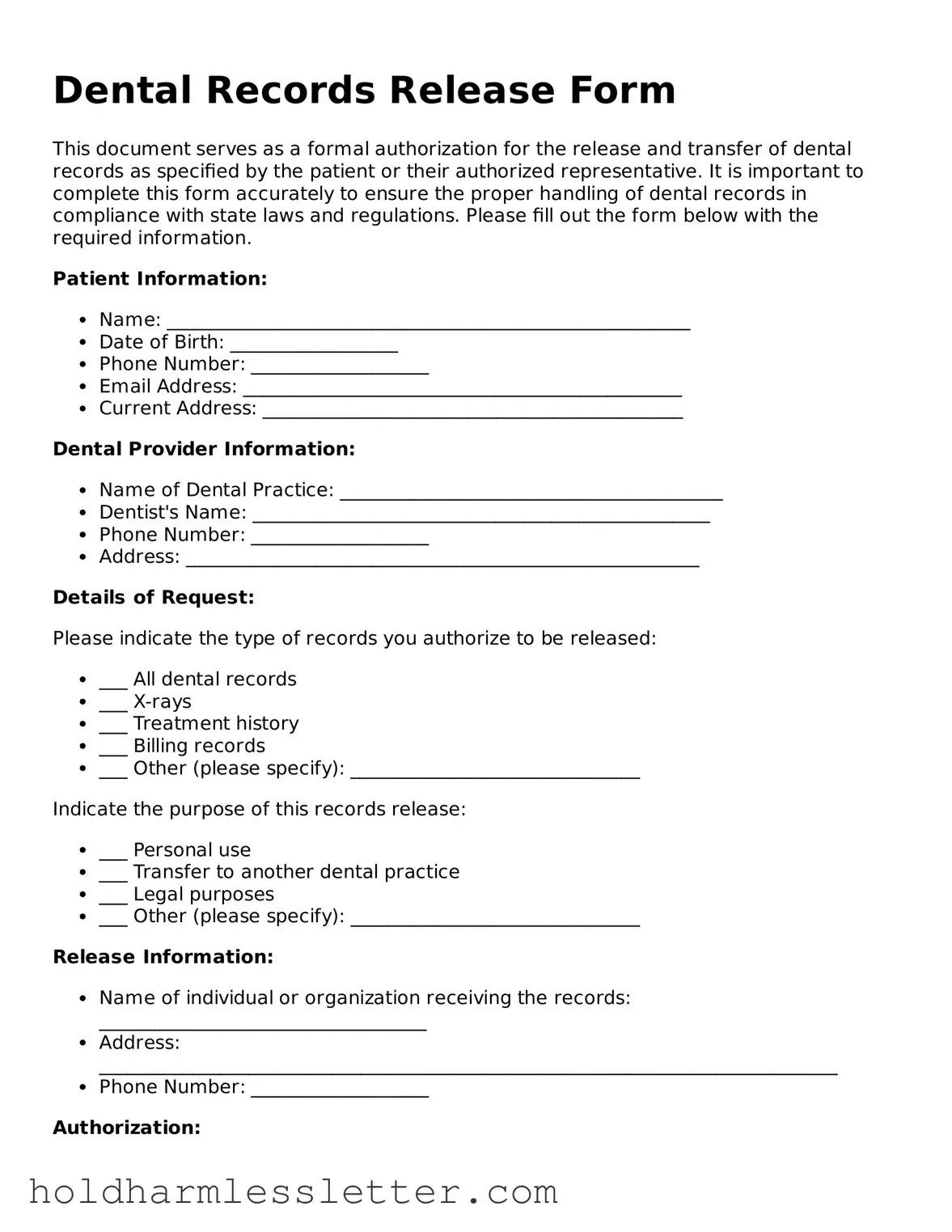What is a Dental Records Release form?
A Dental Records Portable Document Format, commonly referred to as the Dental Records Release form, is a document used by patients to authorize the transfer of their dental records from one dentist or dental office to another. It serves as a written consent, ensuring that the sharing of sensitive dental information is done respectfully and in accordance with privacy laws.
Why would I need to use a Dental Records Release form?
There are several reasons you might need to use a Dental Records Release form. If you're moving to a new location and need to transfer to a new dental practice, changing dentists for personal or professional reasons, or seeing a specialist who needs to review your dental history, this form will be necessary to officially transfer your dental records and ensure your new dentist has all the information they need for your continued care.
What information is typically included in a Dental Records Release form?
Generally, a Dental Records Release form will include the patient's name, date of birth, and contact information; the name and contact details of the dental office releasing the information; the name and contact details of the dental office receiving the information; a detailed description of the records to be released; the purpose of the release; any expiration date for the authorization; and spaces for signatures from the patient or their legal representative.
How can I obtain a Dental Records Release form?
Most dental offices will have their own version of a Dental Records Release form. You can request one directly from your current dentist's office. Alternatively, many dental practices and legal resource websites offer downloadable templates that can be printed and filled out. It's important to ensure that any template you use complies with the privacy regulations in your jurisdiction.
Is my permission always required to release dental records?
Yes, in most cases, your explicit permission is required to release dental records due to strict patient privacy laws, such as the Health Insurance Portability and Accountability Act (HIPAA) in the United States. However, there are exceptions, such as when records are requested by law enforcement under a court order, or for public health and safety reasons, among others.
Can I request that only specific parts of my dental record be released?
Yes, you can specify which parts of your dental records you want to be released. The Dental Records Release form allows you to indicate whether you want all your records transferred or only specific portions, such as X-rays, treatment history, or billing information. It's important to communicate your needs clearly to ensure only the desired information is shared.
What happens if I don't sign a Dental Records Release form?
If you choose not to sign a Dental Records Release form, your current dentist cannot legally share your dental records with another dentist or dental office. This may affect your future dental care, as your new dentist won’t have access to your historical dental records, potentially leading to a lack of comprehensive understanding of your dental history and needs.
Can I revoke my authorization to release dental records?
Yes, you have the right to revoke your authorization at any time. However, the revocation must be made in writing and submitted to your dentist's office. It's important to note that revoking your authorization will not affect any use or disclosures already made with your consent prior to the revocation.
